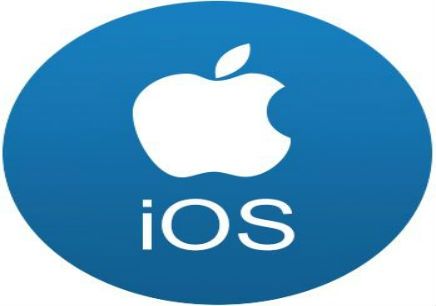写在前面
APP开发避免不开系统权限的问题,如何在APP以更加友好的方式向用户展示系统权限,似乎也是开发过程中值得深思的一件事;
那如何提高APP获取iOS系统权限的通过率呢?有以下几种方式:
- 在用户打开APP时就向用户请求权限;
- 告知用户授权权限后能够获得好处之后,再向用户请求权限;
- 在绝对必要的情况下才向用户请求权限,例如:用户访问照片库时请求访问系统相册权限;
- 在展示系统权限的对话框前,先向用户显示自定义的对话框,若用户选择不允许,默认无操作,若用户选择允许,再展示系统对话框。
上述情况在开发过程中是经常遇到的,不同方式的选择会影响最后用户交互体验。这一点感悟正是源于上一周工作遇到的问题:适配iOS10,如何获取应用联网权限用以管理系统对话框的显示管理。当我把这个问题解决后,感觉有必要将常用的iOS系统权限做一个总结,以便后用。
权限分类
- 联网权限
- 相册权限
- 相机、麦克风权限
- 定位权限
- 推送权限
- 通讯录权限
- 日历、备忘录权限
联网权限
引入头文件 @import CoreTelephony;
应用启动后,检测应用中是否有联网权限
- CTCellularData *cellularData = [[CTCellularData alloc]init];
- cellularData.cellularDataRestrictionDidUpdateNotifier = ^(CTCellularDataRestrictedState state){
- //获取联网状态
- switch (state) {
- case kCTCellularDataRestricted:
- NSLog(@"Restricrted");
- break;
- case kCTCellularDataNotRestricted:
- NSLog(@"Not Restricted");
- break;
- case kCTCellularDataRestrictedStateUnknown:
- NSLog(@"Unknown");
- break;
- default:
- break;
- };
- };
查询应用是否有联网功能
- CTCellularData *cellularData = [[CTCellularData alloc]init];
- CTCellularDataRestrictedState state = cellularData.restrictedState;
- switch (state) {
- case kCTCellularDataRestricted:
- NSLog(@"Restricrted");
- break;
- case kCTCellularDataNotRestricted:
- NSLog(@"Not Restricted");
- break;
- case kCTCellularDataRestrictedStateUnknown:
- NSLog(@"Unknown");
- break;
- default:
- break;
- }
相册权限--IOS 9.0之前
导入头文件@import AssetsLibrary;
检查是否有相册权限
- ALAuthorizationStatus status = [ALAssetsLibrary authorizationStatus];
- switch (status) {
- case ALAuthorizationStatusAuthorized:
- NSLog(@"Authorized");
- break;
- case ALAuthorizationStatusDenied:
- NSLog(@"Denied");
- break;
- case ALAuthorizationStatusNotDetermined:
- NSLog(@"not Determined");
- break;
- case ALAuthorizationStatusRestricted:
- NSLog(@"Restricted");
- break;
- default:
- break;
- }
相册权限--IOS 8.0之后
导入头文件@import Photos;
检查是否有相册权限
- PHAuthorizationStatus photoAuthorStatus = [PHPhotoLibrary authorizationStatus];
- switch (photoAuthorStatus) {
- case PHAuthorizationStatusAuthorized:
- NSLog(@"Authorized");
- break;
- case PHAuthorizationStatusDenied:
- NSLog(@"Denied");
- break;
- case PHAuthorizationStatusNotDetermined:
- NSLog(@"not Determined");
- break;
- case PHAuthorizationStatusRestricted:
- NSLog(@"Restricted");
- break;
- default:
- break;
- }
![Uploading 144446-b8aca7ba38c5f8c0_695906.png . . .]获取相册权限
- [PHPhotoLibrary requestAuthorization:^(PHAuthorizationStatus status) {
- if (status == PHAuthorizationStatusAuthorized) {
- NSLog(@"Authorized");
- }else{
- NSLog(@"Denied or Restricted");
- }
- }];
相机和麦克风权限
导入头文件@import AVFoundation;
检查是否有相机或麦克风权限
- AVAuthorizationStatus AVstatus = [AVCaptureDevice authorizationStatusForMediaType:AVMediaTypeVideo];//相机权限
- AVAuthorizationStatus AVstatus = [AVCaptureDevice authorizationStatusForMediaType:AVMediaTypeAudio];//麦克风权限
- switch (AVstatus) {
- case AVAuthorizationStatusAuthorized:
- NSLog(@"Authorized");
- break;
- case AVAuthorizationStatusDenied:
- NSLog(@"Denied");
- break;
- case AVAuthorizationStatusNotDetermined:
- NSLog(@"not Determined");
- break;
- case AVAuthorizationStatusRestricted:
- NSLog(@"Restricted");
- break;
- default:
- break;
- }
获取相机或麦克风权限
- [AVCaptureDevice requestAccessForMediaType:AVMediaTypeVideo completionHandler:^(BOOL granted) {//相机权限
- if (granted) {
- NSLog(@"Authorized");
- }else{
- NSLog(@"Denied or Restricted");
- }
- }];
- [AVCaptureDevice requestAccessForMediaType:AVMediaTypeAudio completionHandler:^(BOOL granted) {//麦克风权限
- if (granted) {
- NSLog(@"Authorized");
- }else{
- NSLog(@"Denied or Restricted");
- }
- }];
定位权限
导入头文件@import CoreLocation;
由于iOS8.0之后定位方法的改变,需要在info.plist中进行配置;
检查是否有定位权限
- BOOL isLocation = [CLLocationManager locationServicesEnabled];
- if (!isLocation) {
- NSLog(@"not turn on the location");
- }
- CLAuthorizationStatus CLstatus = [CLLocationManager authorizationStatus];
- switch (CLstatus) {
- case kCLAuthorizationStatusAuthorizedAlways:
- NSLog(@"Always Authorized");
- break;
- case kCLAuthorizationStatusAuthorizedWhenInUse:
- NSLog(@"AuthorizedWhenInUse");
- break;
- case kCLAuthorizationStatusDenied:
- NSLog(@"Denied");
- break;
- case kCLAuthorizationStatusNotDetermined:
- NSLog(@"not Determined");
- break;
- case kCLAuthorizationStatusRestricted:
- NSLog(@"Restricted");
- break;
- default:
- break;
- }
获取定位权限
- CLLocationManager *manager = [[CLLocationManager alloc] init];
- [manager requestAlwaysAuthorization];//一直获取定位信息
- [manager requestWhenInUseAuthorization];//使用的时候获取定位信息
在代理方法中查看权限是否改变
- - (void)locationManager:(CLLocationManager *)manager didChangeAuthorizationStatus:(CLAuthorizationStatus)status{
- switch (status) {
- case kCLAuthorizationStatusAuthorizedAlways:
- NSLog(@"Always Authorized");
- break;
- case kCLAuthorizationStatusAuthorizedWhenInUse:
- NSLog(@"AuthorizedWhenInUse");
- break;
- case kCLAuthorizationStatusDenied:
- NSLog(@"Denied");
- break;
- case kCLAuthorizationStatusNotDetermined:
- NSLog(@"not Determined");
- break;
- case kCLAuthorizationStatusRestricted:
- NSLog(@"Restricted");
- break;
- default:
- break;
- }
- }
推送权限
检查是否有通讯权限
- UIUserNotificationSettings *settings = [[UIApplication sharedApplication] currentUserNotificationSettings];
- switch (settings.types) {
- case UIUserNotificationTypeNone:
- NSLog(@"None");
- break;
- case UIUserNotificationTypeAlert:
- NSLog(@"Alert Notification");
- break;
- case UIUserNotificationTypeBadge:
- NSLog(@"Badge Notification");
- break;
- case UIUserNotificationTypeSound:
- NSLog(@"sound Notification'");
- break;
- default:
- break;
- }
获取推送权限
- UIUserNotificationSettings *setting = [UIUserNotificationSettings settingsForTypes:UIUserNotificationTypeSound | UIUserNotificationTypeAlert | UIUserNotificationTypeBadge categories:nil];
- [[UIApplication sharedApplication] registerUserNotificationSettings:setting];
通讯录权限
iOS9.0之前
导入头文件 @import AddressBook;
检查是否有通讯录权限
- ABAuthorizationStatus ABstatus = ABAddressBookGetAuthorizationStatus();
- switch (ABstatus) {
- case kABAuthorizationStatusAuthorized:
- NSLog(@"Authorized");
- break;
- case kABAuthorizationStatusDenied:
- NSLog(@"Denied'");
- break;
- case kABAuthorizationStatusNotDetermined:
- NSLog(@"not Determined");
- break;
- case kABAuthorizationStatusRestricted:
- NSLog(@"Restricted");
- break;
- default:
- break;
- }
获取通讯录权限
- ABAddressBookRef addressBook = ABAddressBookCreateWithOptions(NULL, NULL);
- ABAddressBookRequestAccessWithCompletion(addressBook, ^(bool granted, CFErrorRef error) {
- if (granted) {
- NSLog(@"Authorized");
- CFRelease(addressBook);
- }else{
- NSLog(@"Denied or Restricted");
- }
- });
iOS9.0及以后
导入头文件 @import Contacts;
检查是否有通讯录权限
- CNAuthorizationStatus status = [CNContactStore authorizationStatusForEntityType:CNEntityTypeContacts];
- switch (status) {
- case CNAuthorizationStatusAuthorized:
- {
- NSLog(@"Authorized:");
- }
- break;
- case CNAuthorizationStatusDenied:{
- NSLog(@"Denied");
- }
- break;
- case CNAuthorizationStatusRestricted:{
- NSLog(@"Restricted");
- }
- break;
- case CNAuthorizationStatusNotDetermined:{
- NSLog(@"NotDetermined");
- }
- break;
- }
获取通讯录权限
- CNContactStore *contactStore = [[CNContactStore alloc] init];
- [contactStore requestAccessForEntityType:CNEntityTypeContacts completionHandler:^(BOOL granted, NSError * _Nullable error) {
- if (granted) {
- NSLog(@"Authorized");
- }else{
- NSLog(@"Denied or Restricted");
- }
- }];
日历、备忘录权限
导入头文件
检查是否有日历或者备忘录权限
- typedef NS_ENUM(NSUInteger, EKEntityType) {
- EKEntityTypeEvent,//日历
- EKEntityTypeReminder //备忘
- };
- EKAuthorizationStatus EKstatus = [EKEventStore authorizationStatusForEntityType:EKEntityTypeEvent];
- switch (EKstatus) {
- case EKAuthorizationStatusAuthorized:
- NSLog(@"Authorized");
- break;
- case EKAuthorizationStatusDenied:
- NSLog(@"Denied'");
- break;
- case EKAuthorizationStatusNotDetermined:
- NSLog(@"not Determined");
- break;
- case EKAuthorizationStatusRestricted:
- NSLog(@"Restricted");
- break;
- default:
- break;
- }
获取日历或备忘录权限
- EKEventStore *store = [[EKEventStore alloc]init];
- [store requestAccessToEntityType:EKEntityTypeEvent completion:^(BOOL granted, NSError * _Nullable error) {
- if (granted) {
- NSLog(@"Authorized");
- }else{
- NSLog(@"Denied or Restricted");
- }
- }];
最后一点
素有获取权限的方法,多用于用户第一次操作应用,iOS 8.0之后,将这些设置都整合在一起,并且可以开启或关闭相应的权限。所有的权限都可以通过下面的方法打开:
- [[UIApplication sharedApplication] openURL:[NSURL URLWithString:UIApplicationOpenSettingsURLString]];
上述的权限多为经常用到的权限,当然不会很全面,大家如有需要其他的权限,可以在下方评论,我会及时加上去的。
希望这篇文章能够给大家的开发带来一些便利。




































